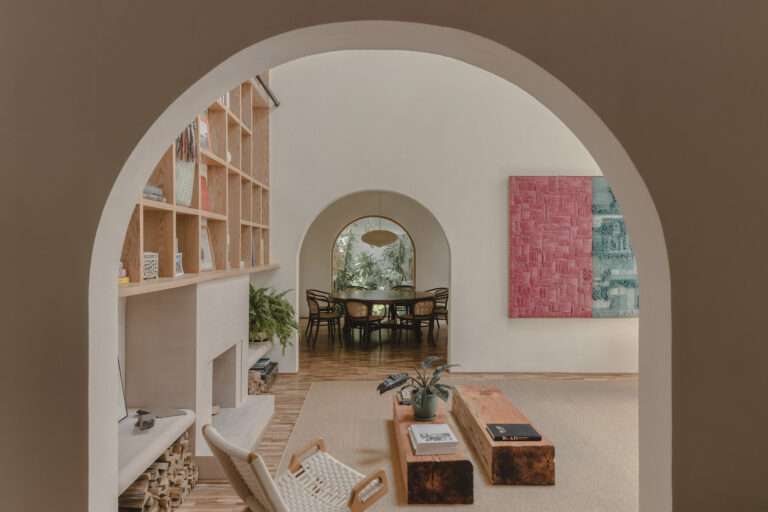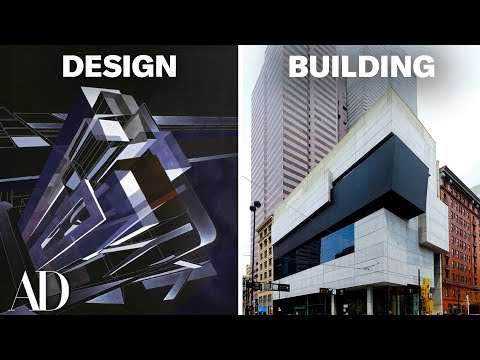Mexican architect Carlos H Matos has completed a concrete house designed to be an “ode to antiquity” and “futurity” in Puerto Escondido, Oaxaca.
Known as Casa Monte, the one-bedroom house was completed in 2023 with a rooftop terrace and a 150-square-metre (1,615-square foot) footprint. It is nestled between mountains and the Pacific Ocean and serves as a rental property.
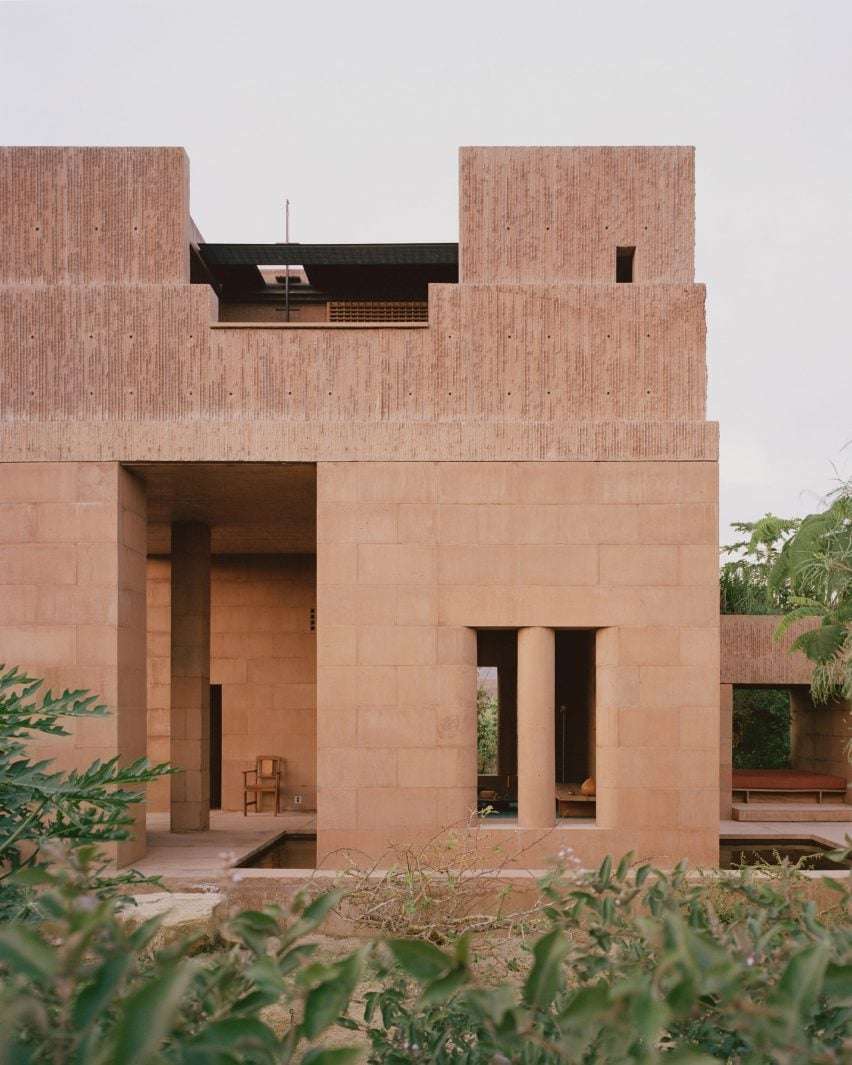
“It is equally an homage to the profound transformations that shaped Mexico’s built environment in the 20th century,” Matos told Dezeen. “It has many pasts, remote and recent, and a present one still taking shape.”
The spaces were designed to prompt residents toward activity and engagement. The shelter serves as a simple and serene counterpoint to from houses with climate-controlled comfort and digital access.
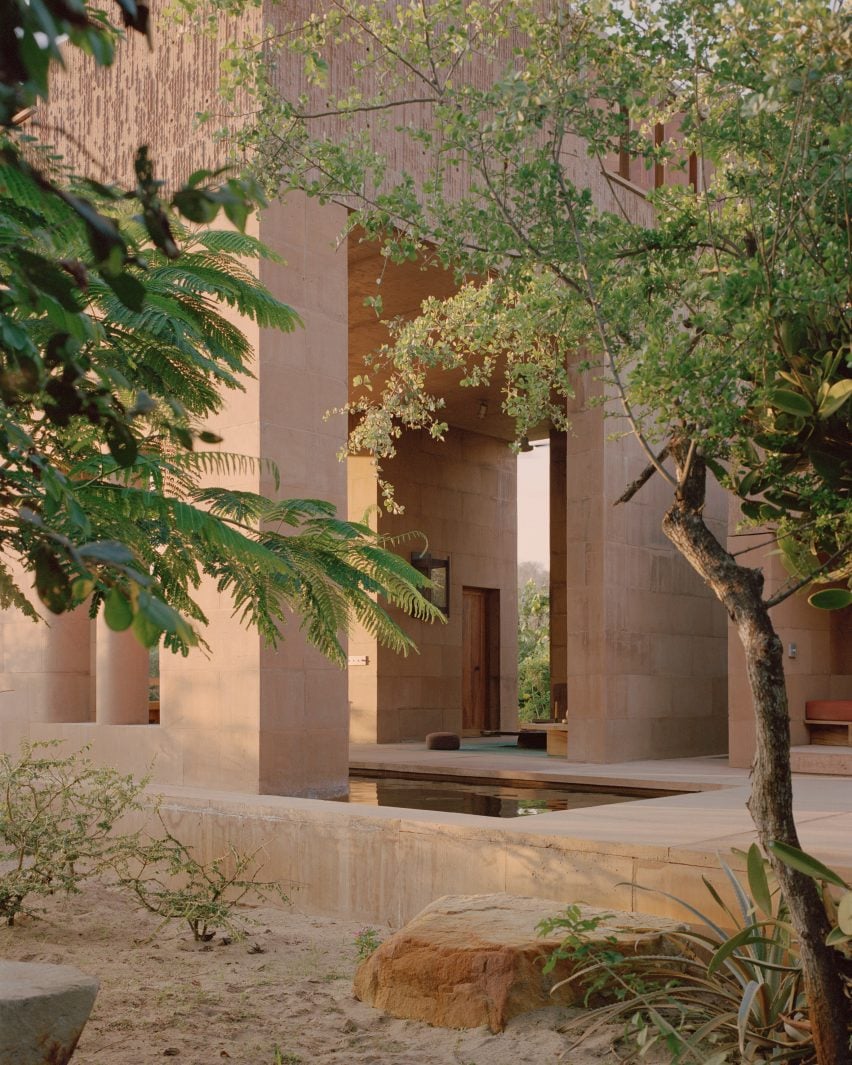
“This way the house becomes deeply personal and intimate, and at the same time universal in the sense that it will have hundreds of users experiencing the house, and being able to incarnate the character, its way of living and rituals,” Matos continued.
Rising out of cacti and low shrubbery, the ochre-coloured structure suggests “refuge” in the open landscape, more so than “home.” It is located near the Tadao Ando-designed Casa Wabi art institution.
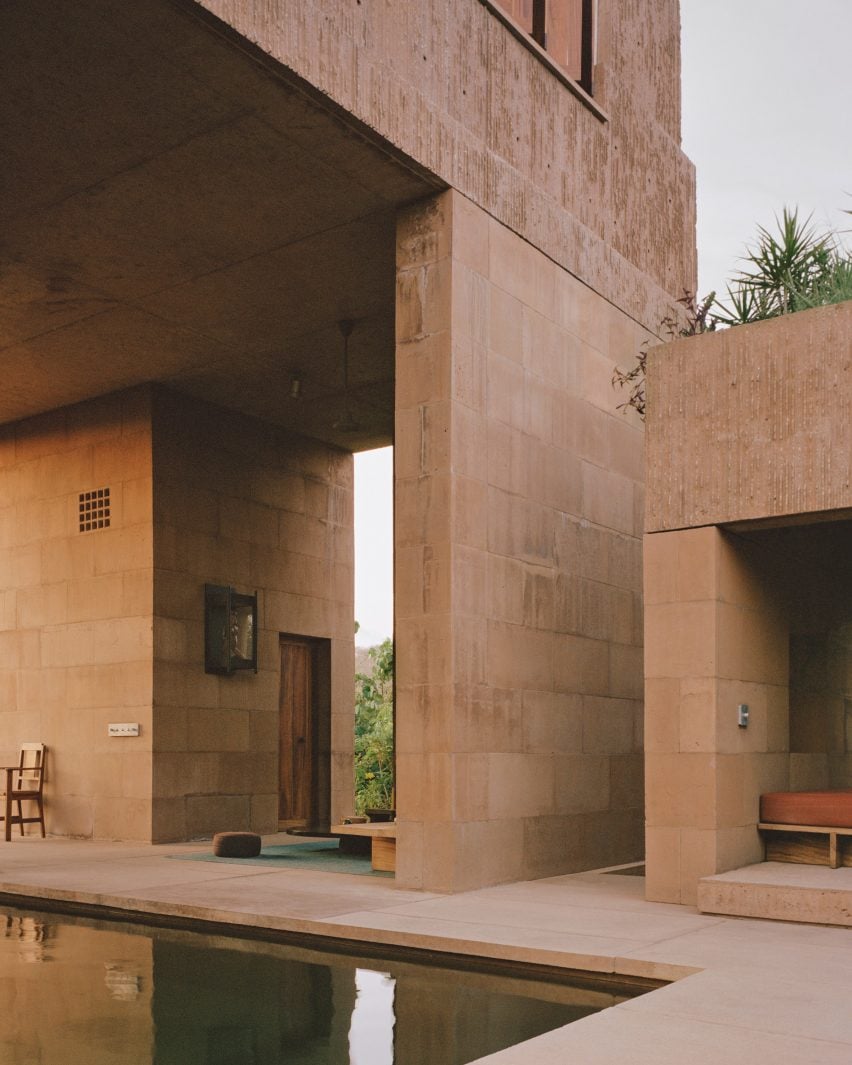
Approached by a winding sandy path, Matos described the house as an experiment in seclusion.
Constructed with more than 1,500 earth-tinted cast concrete blocks, the architecture is “fundamentally sculptural”, according to Matos.
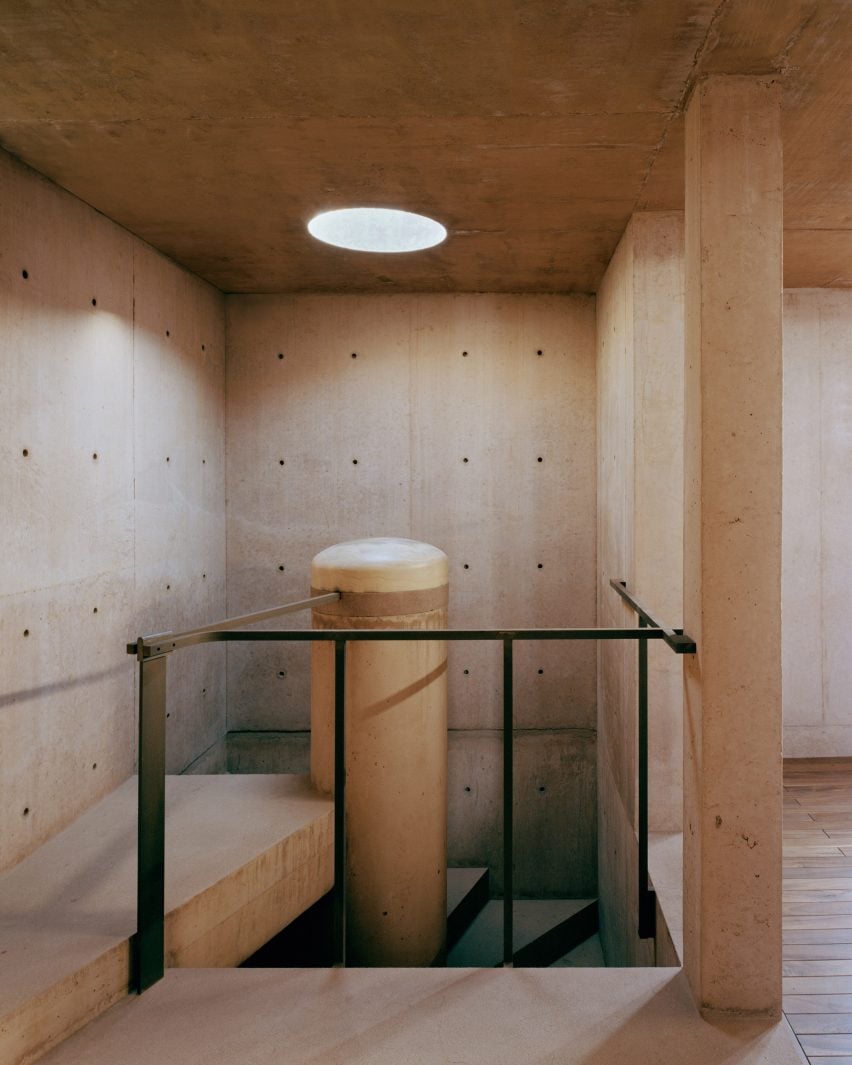
Smooth blocks form the main level, outlining spaces that blur the boundary between interior and exterior.
Organised like a portico set on top of a platform, the ground floor includes a compact kitchen, enclosed bathroom and half-sheltered living space that opens internally to a covered rectangular pool.
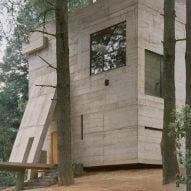
 Ludwig Godefroy creates brutalist cube-shaped home in Mexico
Ludwig Godefroy creates brutalist cube-shaped home in Mexico
Off to the side, a small cube-shaped form holds a daybed and is topped with a green roof.
The corner of the portico contains a winding staircase that ascends to the upper level where a square bedroom holds most of the floor area, but is softened and warmed by wooden floors and window frames.
The bathroom is split into two portions on either side of the bedroom, while a terrace with a planted garden bed sits opposite of the staircase.
The blocks that form the upper level are raked with a vertically oriented pattern and step back from the perimeter of the building halfway up the second level, giving the appearance that the building is diminishing toward the sky.
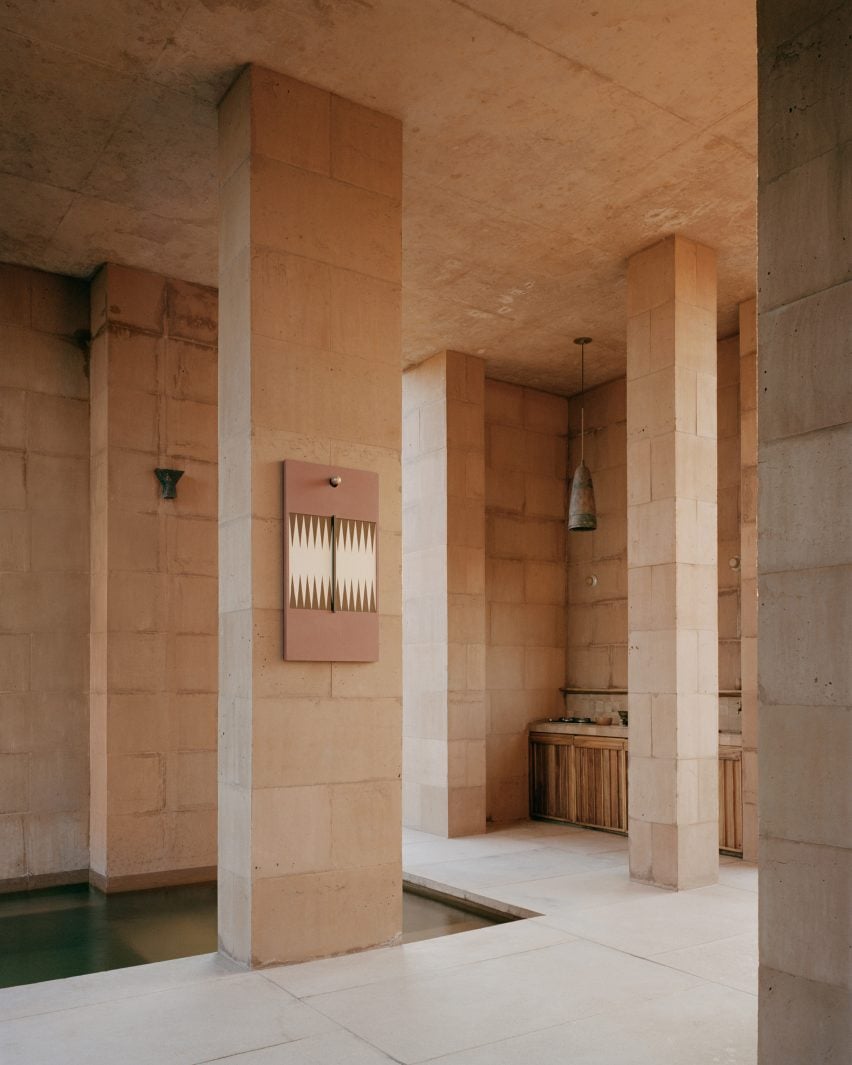
“A richly textured terrace offers a full view of the ocean to wake up to, a space to bathe, and a thin ladder that leads to the roof, which completes the experience after nightfall,” Matos said.
“This slice of domesticated space amid an otherwise untouched landscape at once suggests civilizations past and utopian gestures of futurity, like an ancient temple activated through sleek fixtures of brass and steel.”
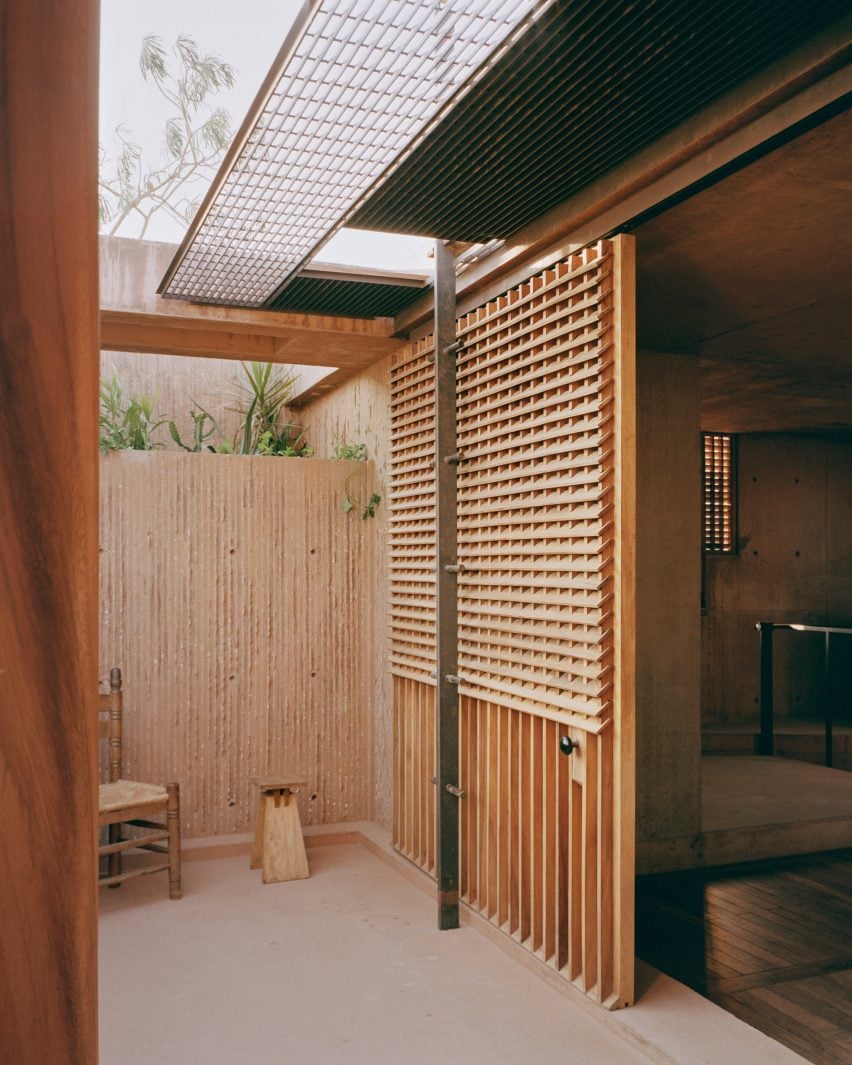
Matos was a co-founder of the Mexico City sculpture practice Tezontle, which contributed a sculpture and two tapestries to Casa Möbius as part of the 2019 Mexico City Design Week.
Another concrete residence recently completed in Oaxaca is Espacio 18 Arquitectura’s Casa del Alma, designed as a “rock carved to create a sculpture”.
The photography is by Rory Gardiner.
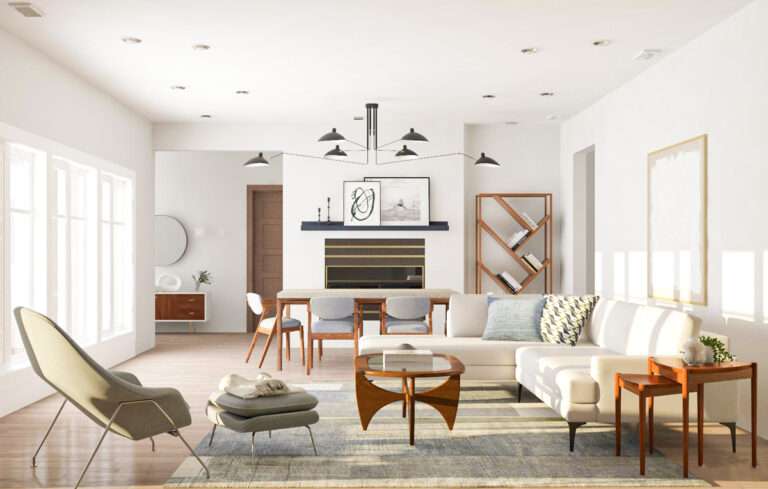
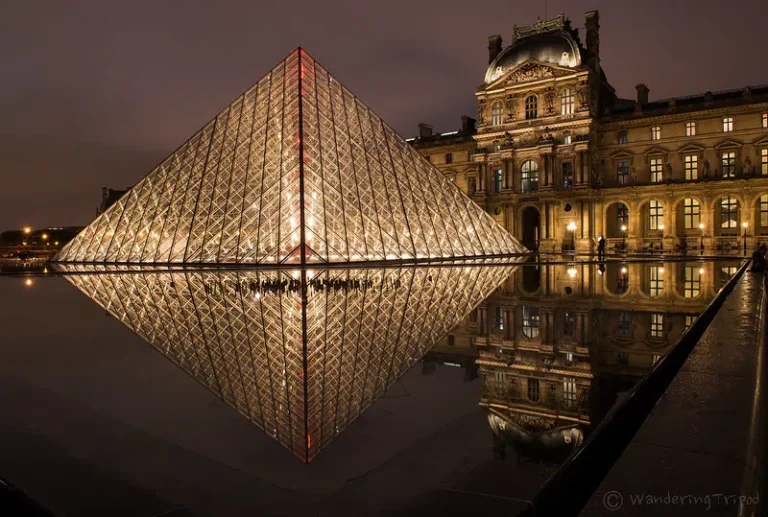
![Natural Habitat: Following the Sun in Brooklyn [VIDEO]](https://myproperty.life/wp-content/uploads/2023/12/natural-habitat-following-the-sun-in-brooklyn-video-768x510.jpg)
